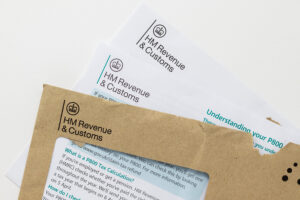
Certificate of Tax Position
The Chartered Institute of Taxation (CIOT) published an update for the team, which provides information about Her Majesty Queen Elizabeth’s Revenue and Customs (HMRC) letter. This guidance helps members to respond appropriately if a client has received the document.
We have shared the update with the HMRC before publishing to ensure every detail is accurate.
The Framework
Over the years, HMRC has been practicing the action of reaching out to UK individuals who have either a foreign income, gain, or assets. The HMRC receives information from the foreign tax authorities under the AEOI, Automatic Exchange of Information. Gathering the data from AEOI, they send letters to UK residents who have an overseas income. HMRC also takes extra risk assessment before sending the documents.
The most recent letter sent was in the Common Reporting Standard, by the HMRC’S risk and Intelligence Service, Offshore.

What does the letter say?
The document is sent by HMRC to inform the UK individual; regarding their foreign matter.
HMRC uses standard content and starts by notifying the UK individual that the HMRC has received data that indicates that they have received international income or gains, which are subject to the UK tax.
The letter advises a UK resident on the following:
- It is an individual’s responsibility to inform the HMRC regarding their UK tax accountabilities on their income and gains from anywhere across the globe.
- To reassure each individual has checked and declared all their UK tax liabilities.
- To seek professional advice if an individual is not sure they have disclosed all their foreign income and gains.
- Moreover, a copy of the letter is also sent to a tax agent if one has.
There is a form attached to the letter, “Certificate of tax position,” which helps them to keep track of responsive cases. Hence, it is simpler to shortlist and follow-up with unresponsive matters. Individuals receiving this letter are given a period of 30-days to respond, along with filling the form that informs if they have any other additional tax accountabilities to disclose or not.
What to do if a client receives this letter?
- Check the status
HMRC is writing this letter to inform them that they are aware the individual has a foreign income or gains. They are not stating that the text return is certainly incorrect, but the HMRC does a thorough assessment before sending the letter.
Therefore, it is necessary to check the individual’s tax affairs are correct and settled to the best of their knowledge. - Respond to the letter
Whether there is anything to disclose or not, do respond to the letter within the given period.
If the declaration is required:
The tax agent should consider the taxpayer’s circumstances and then advise to use the right channel for the disclosure.
The letter states the disclosure to be made through the Worldwide Disclosure Facility (WDF), though HMRC cannot constrain on which method to use, as WDF may not be the most relevant method in this taxpayer’s case. Therefore, they can opt-in for Code of Practice 9 (COP9) in the Contractual Disclosure Facility.
A member of the Chartered Institute of Taxation should not perform professional work which they are not qualified to carry out unless they obtain assistance from a senior qualified specialist.
Hence, if the agent is not sure about the matter, they should too seek advice from a professional.
If the declaration is not required:
The receiver should respond to the HMRC by writing an explanatory letter in this situation too. It is necessary because responding is better than ignoring. If the HMRC receives no-response, they are going to follow-up on the matter, which will attract more remarks.
If you are unable to respond within a given period, contact HMRC and request to extend the duration of submission.
- Consider the Certificate of Tax Position
It is necessary to think through this before signing and submitting the Certificate of Tax Position form.
There is two main significant difference in this form:
The individual has no legal obligation to fill out this form and submit it to the HMRC.
The period covered in the Certificate of Tax Position form does not limit to a particular tax year; it applies to all the tax years.
Upon rectifying, if the tax affairs of an individual are correct, they do not have to make a declaration.
If there is a need for a declaration, the individual can choose not to fill out the form and inform the HMRC through a letter. They could state the changes are made via WDF or COP9.
As HMRC is in agreement with AEOI, they are constantly updated with the data of a UK person’s foreign affairs. Therefore, the letters are sent in a batch with fixed interims. Individuals and members should be aware that this practice will continue in the future too.


